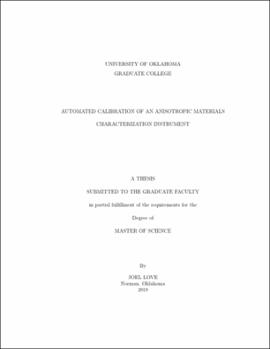| dc.description.abstract | The increasingly widespread development and use of inhomogeneous composites and artificial dielectrics/diamagnetics has necessitated the development of methods to characterize these materials over a range of frequencies and incidence angles. This paper will present a low-cost <$10,000 instrument, developed by the Phased Array Antenna Research and Development (PAARD) group at the University of Oklahoma (OU) to perform such material characterization. The proposed RF scanner uses three antennas: one as the transmitter, one as the receiver to measure S11, and one as the receiver to measure S21. The use of two receive antennas allows one to remain stationary opposite the transmit antenna, while the other is free to rotate around the sample at twice the sample's own rotation rate, thereby maintaining a position normal to the surface of the sample. This configuration allows nearly simultaneous measurement of a material's S11 and S21 at any angle of incidence. High-precision stepper motors, controlled by a Computer Numerical Control (CNC) board as well as rotary tables are used to maintain precise positioning of all three antennas and the rotation of the sample under test. A Graphical User Interface (GUI) has been developed using LabVIEW to automate the calibration and anisotropic material characterization process. The software supports using either Transmission-Reflection-Line (TRL) calibration or Thru calibration to maintain the system's accuracy. The Smith algorithm is then used to calculate the material's permeability and permittivity at all incidence angles from the measured S-parameters, producing plots of the real and imaginary parts of the permeability and permittivity versus angle of incidence. The system has been confirmed to accurately measure the permittivity and permeability of FR4, Rogers 4350B, Rogers 5880, and Rohacell at broadside, as well as the permeability and permittivity for FR4 and an anisotropic engineered material (frequency selective surface) at multiple angles of incidence. | en_US |
